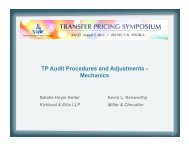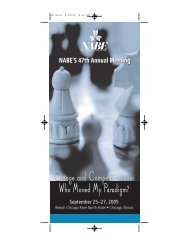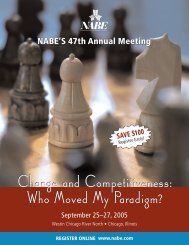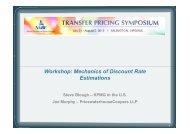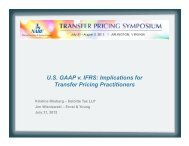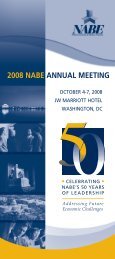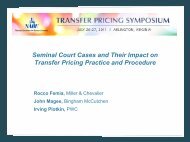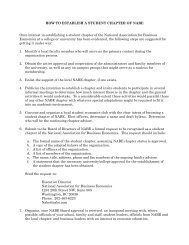An Econometric Analysis of Consumer Sentiment and ... - NABE
An Econometric Analysis of Consumer Sentiment and ... - NABE
An Econometric Analysis of Consumer Sentiment and ... - NABE
- No tags were found...
You also want an ePaper? Increase the reach of your titles
YUMPU automatically turns print PDFs into web optimized ePapers that Google loves.
variable estimated coefficients were the expected sign <strong>and</strong> statistically significant at the 5% level. The UnemploymentRate coefficient was not statistically significant in consumer sentiment regression, but was negative withapproximately 5% level <strong>of</strong> significance in the consumer confidence regression.The Gasoline Price Trigger <strong>and</strong> DJIA Value Trigger coefficients were the expected sign <strong>and</strong> statistically significant atthe 20–25% level range for the consumer sentiment regression <strong>and</strong> in the 5–14% level range for the consumerconfidence regression. The absolute values <strong>of</strong> the t-ratios on the triggers were above one, thus contributing to thesignificance <strong>of</strong> the regression (F-statistic).The 2001 recession dummy coefficient was greater than the Great Recession dummy coefficient in each <strong>of</strong> theregressions. However, the absolute value <strong>of</strong> the t-ratio on the 2001 recession coefficient was below one in theconsumer sentiment regression.5 IHS Global Insight Published 7/1/11



